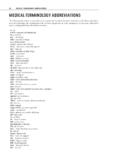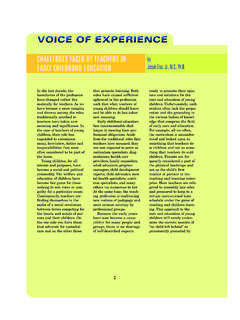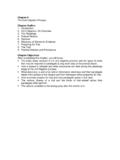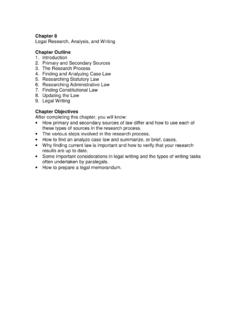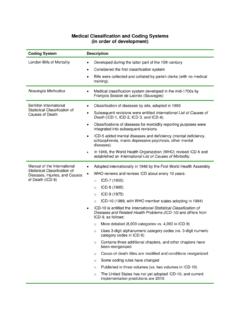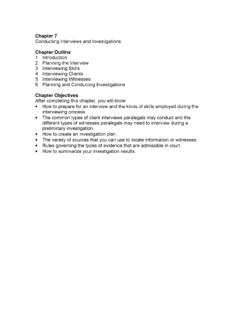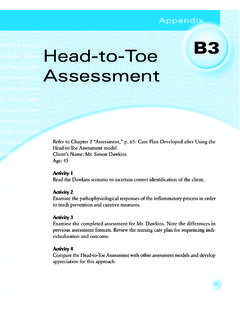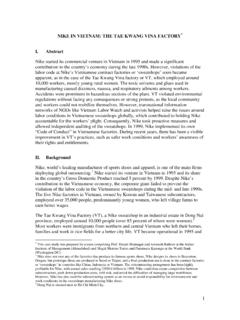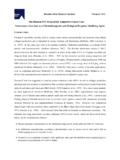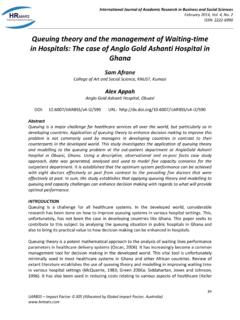Transcription of Case Study 03 - Brands Delmar - Cengage Learning
1 3-1 case Study 3:ToddlerTHE NERVOUS SYSTEMO verview:This case requires knowledge of otitis media, hearing impairment, the long-termeffects of second-hand cigarette smoke on a child s health, growth and development, as wellas an understanding of the client s background and personal from Thomson Delmar Learning s case Study Series: Pediatrics, by Bonita E. Broyles, RN, BSN,MA, PhD. Copyright 2006 Thomson Delmar Learning , Clifton Park, NY. All rights 2 SETTING ClinicETHNICITY Spanish AmericanPSYCHOSOCIAL Routine exposure to cigarette smoke Parental anxietyETHICAL Possible nurse biasCase Study 3/30/06 4:18 PM Page 3-13-2 Client ProfileIsabel is a 21 2-year-old toddler who lives with her parents and 13-month-old sister in a rural community.
2 Her father is a migrant worker and hermother stays at home with the children. Both parents are smokers. BothIsabel and her sister experienced recurrent episodes of otitis media duringinfancy although Isabel s infections have become less frequent. Isabel sspeech is delayed; however, her mother believes that this is due to her lackof interactions with other children her age. Their culture and financial sit-uation does not encourage daycare settings for children if the mother canstay at home with them. Most of Isabel s speech is not understandablealthough she babbles constantly.
3 Both children have received their sched-uled immunizations at the local pediatric clinic. Isabel is brought to theclinic by her parents when she places a small toy in her ear that her parentsare unable to StudyDuring the admission history, Isabel s mother tells the nurse that she hashad behavior problems with Isabel since she was 11 months old althoughshe stated she had not mentioned this to the staff at the clinic because shewas embarrassed. On further questioning, Isabel s mother explains thatIsabel never listens to me and doesn t even look at me when I talk to her.
4 She further states that Isabel doesn t talk so they can understand her eventhough they have friends whose children not only talk all the time, but shecan understand what they are saying. Isabel s problems are probably myfault because I didn t raise her right. Now I m afraid she is retarded andI don t know how to help her. Isabel sits in her mother s lap babbling dur-ing the interview and does not make eye contact with her parents or thenurse during their conversation or when addressed. She appears disinter-ested in her 2007 by Thomson Delmar Learning , a division of Thomson Learning , Inc.
5 Permission to reproduce for classroom use the significance of Isabel sclinical the relationship betweenIsabel s history of otitis media and herpresent is the incidence of hearingimpairment in children? the types of Isabel s mother s commentthat Isabel has always been a behaviorproblem and Isabel s problems are prob-ably my fault because I didn t raise herright. Now I m afraid she is retarded and Idon t know how to help her. other assessment data would behelpful for the nurse to have to prepareIsabel s care plan? case Study 3/30/06 4:18 PM Page 3-2 case Study 3: TODDLER3-3 Questions and Suggested the significance of Isabel s clinical s clin-ical manifestations indicate that Isabel is experiencing hearing impair-ment, probably conductive hearing loss.
6 Her lack of vocabulary andunderstandable verbalizations results from her inability to hear sounds andwords to imitate. Her behavior problems are probably because she isunable to hear when her mother speaks to her. Frequently children withhearing impairment are mistakenly diagnosed with behavior issues becausethe manifestations of the two are similar, including ignoring when peopletalk, being disinterested in what is going on around them, and inappropri-ate or immature language the relationship between Isabel s history of otitis media and herpresent otitis media is the leading cause of conduc-tive hearing loss.
7 With repeated infections, the middle ear structures losetheir flexibility and become rigid, interfering with the conduction of soundfrom the is the incidence of hearing impairment in children?Approximately3 in 1,000 neonates are born with hearing impairment. Preterm infantsrequiring intensive or critical care have an incidence of 1% to 4% or 10 40per 1,000 because of the immaturity of the central nervous system and sen-sory nerves prior to 37 weeks gestation. In addition, nerves are the mostsensitive to changes in oxygenation in the body and most preterm infantsborn prior to 37 weeks gestation experience some degree of respiratorycompromise and impaired gas exchange.
8 According to Lotke, Hearingloss occurs in 10 per 1,000 children in the United States. Of these, roughly 1in 1,000 has profound hearing loss, and 3 5 per 1,000 have mild to moder-ate hearing loss that may affect language acquisition unless hearing and/orlanguage are aided. Acquired hearing loss may add 10% to 20% to this fig-ure. Internationally, sensory-neural hearing impairment occurs in 9 27 per1,000 children. the types of hearing types of hearingimpairment have been identified: conductive, sensory-neural, and mixedCopyright 2007 by Thomson Delmar Learning , a division of Thomson Learning , Inc.
9 Permission to reproduce for classroom use are the priorities of care forIsabel? the effects of hearing impair-ment on Isabel s growth and the standards of medical-surg-ical care for Isabel s hearing your feelings about parents behavior that places their children at could the nurse approachIsabel s parents about their cigarettesmoking and how it compromises theirchildren? case Study 3/30/06 4:18 PM Page 3-33-4(conductive and sensory-neural combined). Conductive hearing lossoccurs when sound cannot be conducted through the middle ear struc-tures.
10 This type of hearing loss is usually mild and temporary. Sensory-neu-ral hearing loss involves the malfunction of the cochlea in the inner ear asa result of the damage or destruction of the tiny hair cells. The term neuralmeans nerve, so this type indicates damage to the auditory nerve that relaysmessages from the cochlea to the brain. Sensory-neural hearing loss is pro-found and permanent without surgical replacement of the cochlea(cochlear implant). Preterm infants of less than 37 weeks gestation requir-ing intensive care following birth commonly experience this type of hearingimpairment.

